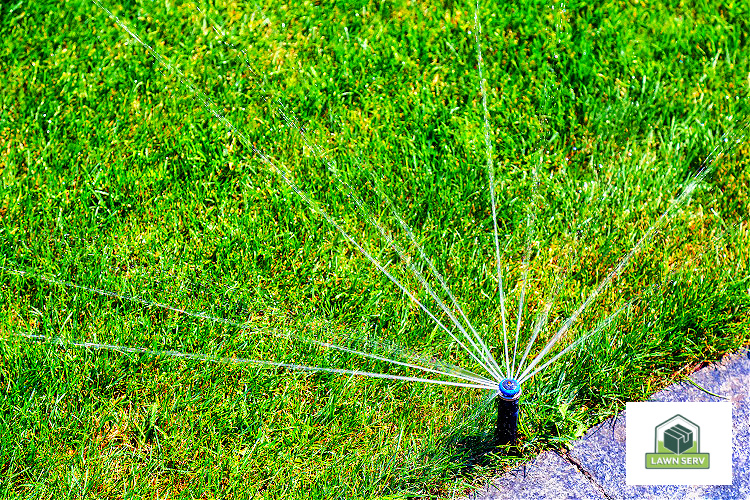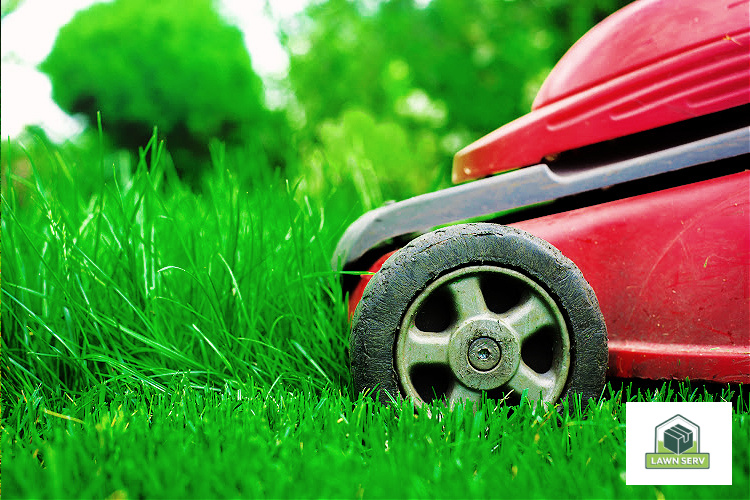
Just picture it: your neighbors gawking in envy at the emerald blanket that's become your yard. You can almost hear their whispers, 'How did they make their brown grass green so fast?'. Sounds like a dream? Well, buckle up because we're about to turn this into reality.
I know what you might be thinking - is it even possible for my lawn to bounce back from its current Sahara-like state? Trust me, I've been there too; staring down at patches of straw-colored blades and feeling a pang of defeat. But let me tell you something...there's hope!
So, buckle up and get ready as we delve into the hidden mysteries beneath those dry patches. We'll confront all aspects from figuring out why your grass has turned a tell-tale brown to investigating how watering habits, or their absence, may have contributed to this situation.
Table Of Contents:
- Understanding Your Lawn's Health - Why is My Grass Brown?
- The Impact of Overwatering - Finding the Right Balance
- Reviving Your Lawn - How Do I Make My Brown Grass Green Again?
- Addressing Weeds and Pests - Maintaining a Healthy Lawn
- Partnering with Lawnserv - Professional Help for Green Lawns
- FAQs in Relation to How Do I Make My Brown Grass Green Fast?
- Turning Your Lawn Grass from Brown to Green
Understanding Your Lawn's Health - Why is My Grass Brown?
If you've observed your grass taking on an uninviting hue of brown, don't be alarmed just yet. Don't worry, the brown color may not be as bad as it appears.
Dormant vs Dead Grass - Recognizing the Difference
The first step to green fast is understanding why grass turns brown in the first place. This could be due to dormancy, a natural state that grass enters when conditions aren't ideal for growth like lack of water or excessive heat.
Brown spots on your lawn may indicate other issues such as grubs, disease, fungus, or wildlife damage. But these are more serious problems than simple dormancy and will need targeted treatment plans.
How can you tell if your grass is dormant or dead? To check whether your grass is dormant or dead, try tugging at a patch of brown grass; if it comes up easily with no resistance, the chances are that it's dead. If it comes up easily with no resistance — sorry folks but that’s likely dead grass there. On the flip side though, if it stays put — rejoice because we're dealing with dormant grass which can be revived.
A soil test kit can also help identify any nutrient deficiencies causing browning and guide corrective measures accordingly.
The Impact of Overwatering - Finding the Right Balance

Water is essential for a green lawn, but too much can turn your grass yellow. Waterlogged soil limits oxygen supply to roots and promotes disease like fungus growth.
Your overzealous watering habits could also invite an army of pests, with insects finding it cozy in damp conditions. Worse still, you might be fostering excessive weed growth by overwatering your grass.
So how do we strike that perfect balance? It's about smart watering strategies rather than quantity alone.
Finding Your Lawn's Sweet Spot
You need to let the water penetrate deep into the soil without causing runoff. This encourages strong root systems which helps maintain a lush green color even during summer heat waves or droughts.
An early morning soak allows enough time for water absorption before sun exposure increases evaporation rates. Late evening watering often leads to overnight saturation which can encourage disease spread and insect infestation as mentioned earlier.
To sum up: keep things moderate. Excess love (in this case, water) won't necessarily make your brown grass green fast.
Reviving Your Lawn - How Do I Make My Brown Grass Green Again?

Transforming brown grass to a deep green color may seem like a tall order, but with the right approach, it's entirely possible. Let's explore some of the most successful strategies for restoring a brown lawn to its vibrant green hue.
Watering Techniques for Revival
Your lawn might be crying out for hydration. Water your grass deeply and infrequently to encourage roots to grow deeper into the soil. Studies suggest this technique can also help nutrients reach your turf more effectively.
Avoid watering during midday when evaporation rates are high. Instead, water early in the morning or late evening when temperatures are cooler.
The Role of Fertilization in Lawn Recovery
Fertilizer plays a crucial role in achieving that healthy green hue you're after. Slow-release nitrogen fertilizers feed your lawn over time and promote steady growth without causing shock from sudden nutrient surges.
Lawnserv’s professional services, for instance, provide personalized fertilizer combinations based on soil test results from their DIY kit. This ensures every inch of your yard gets what it needs to flourish again.
Addressing Weeds and Pests - Maintaining a Healthy Lawn
Weeds can be real party crashers in your lawn's green fiesta. Don't let the party be ruined by these intruders.
Weed Management Strategies
The first step is recognizing the unwanted guests. Both weeds and crabgrass can spoil your lawn's appearance like mustard on a wedding dress.
Different methods help you take control, like using weed killer or digging up those nasty invaders individually. You could also use fertilizer with herbicide across your entire garden – think of it as throwing down some serious anti-weed vibes.
The Importance of Pest Control in Lawn Care
Pest control isn’t just about stopping tiny creatures from feasting on your grass blades; it’s an essential part of maintaining that lush, deep green color we all love so much.
You see, pests are like mini lawnmowers running amok over your precious greenspace – they damage roots and leaves alike. Preventing these uninvited guests will make sure that gorgeous emerald hue doesn’t turn brown overnight. So remember: when it comes to pest management, vigilance is key.
Partnering with Lawnserv - Professional Help for Green Lawns

Maintaining a healthy lawn can be difficult, and just like any other living organism it needs the proper attention to flourish. But let's be honest: getting your grass green fast can feel like an uphill battle.
Lawnserv, our professional lawn care service, gives you access to expert advice and quality service that will help transform your brown grass into a lush carpet of green in no time.
Kansas City Lawn Care Practices
In places like Kansas City, where summer heat can turn even the hardiest lawns brown, understanding local watering practices becomes vital. Our experts know how early morning or late evening watering helps prevent water evaporation ensuring more reaches your grass roots.
We also use soil test kits to analyze soil type and nutrient levels. This data allows us to tailor fertilization strategies using nitrogen fertilizer combinations suited best for warm-season grasses commonly found in this region such as Kentucky Bluegrass or Tall Fescue.
Maintaining Your Green Haven with Lawnserv
Beyond just making your lawn greener faster; we're here for its long-term health too. Regular mowing keeps tall fescue manageable while pest control prevents damage from unwelcome guests. Let us worry about keeping weeds at bay so you don't have to.
FAQs in Relation to How Do I Make My Brown Grass Green Fast?
Can brown grass turn green again?
Absolutely, brown grass can return to a lush green with the right care, including proper watering, fertilizing, and addressing any underlying issues like pests or disease.
How do I bring my brown grass back to life?
To revive your lawn, water it deeply but infrequently. Also, consider aerating the soil and applying slow-release nitrogen fertilizer for sustained growth.
How much water does it take to turn brown grass green?
Your lawn typically needs 1-1.5 inches of water per week. Measure this using a rain gauge or straight-sided container placed in your yard during irrigation.
How long does it take for grass to get green again?
The recovery time depends on how severe the damage is. Generally speaking though, you could see improvements within two weeks with appropriate care.
Turning Your Lawn Grass from Brown to Green
Let's cut to the chase. We've dived deep into understanding why your grass turned brown and how overwatering can impact its health. You possess the aptitude, resources, and methods necessary.
Now comes the fun part - putting it all into practice! The steps we’ve outlined are straightforward: differentiate between dormant and dead grass, find a balance with watering without drowning your lawn, fertilize strategically for recovery and don't forget about pest control.
Weed management might seem daunting at first but remember that every green lawn was once a patchy one too!
You're not just making your yard look better; you're creating an outdoor space that’s both vibrant and healthy. So next time someone asks 'How do I make my brown grass green fast?', give them a knowing smile because you've got this down pat!


